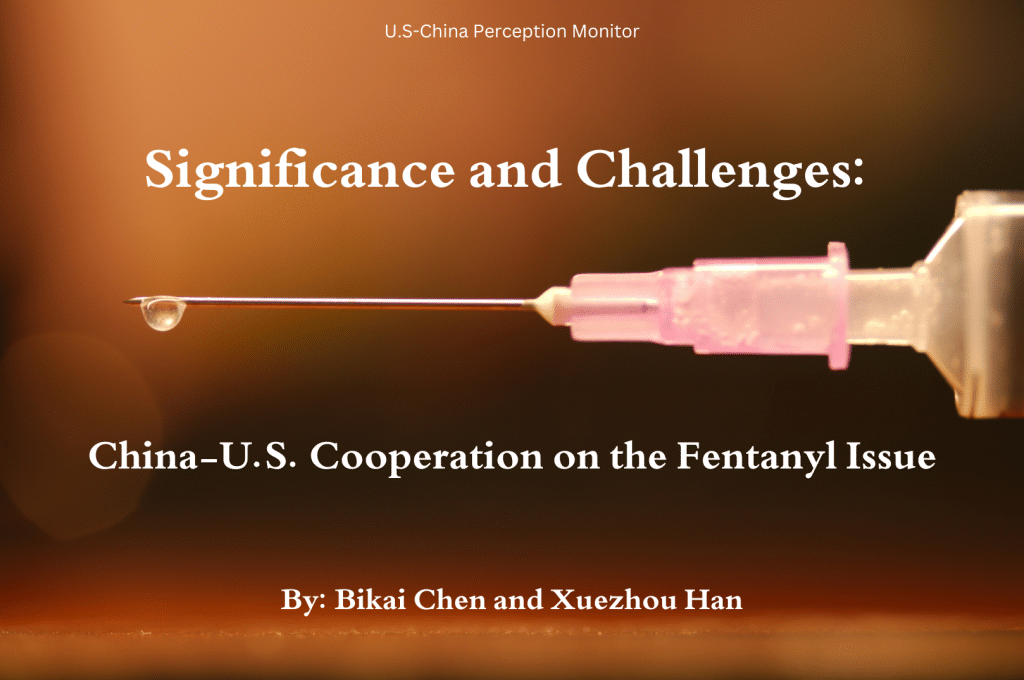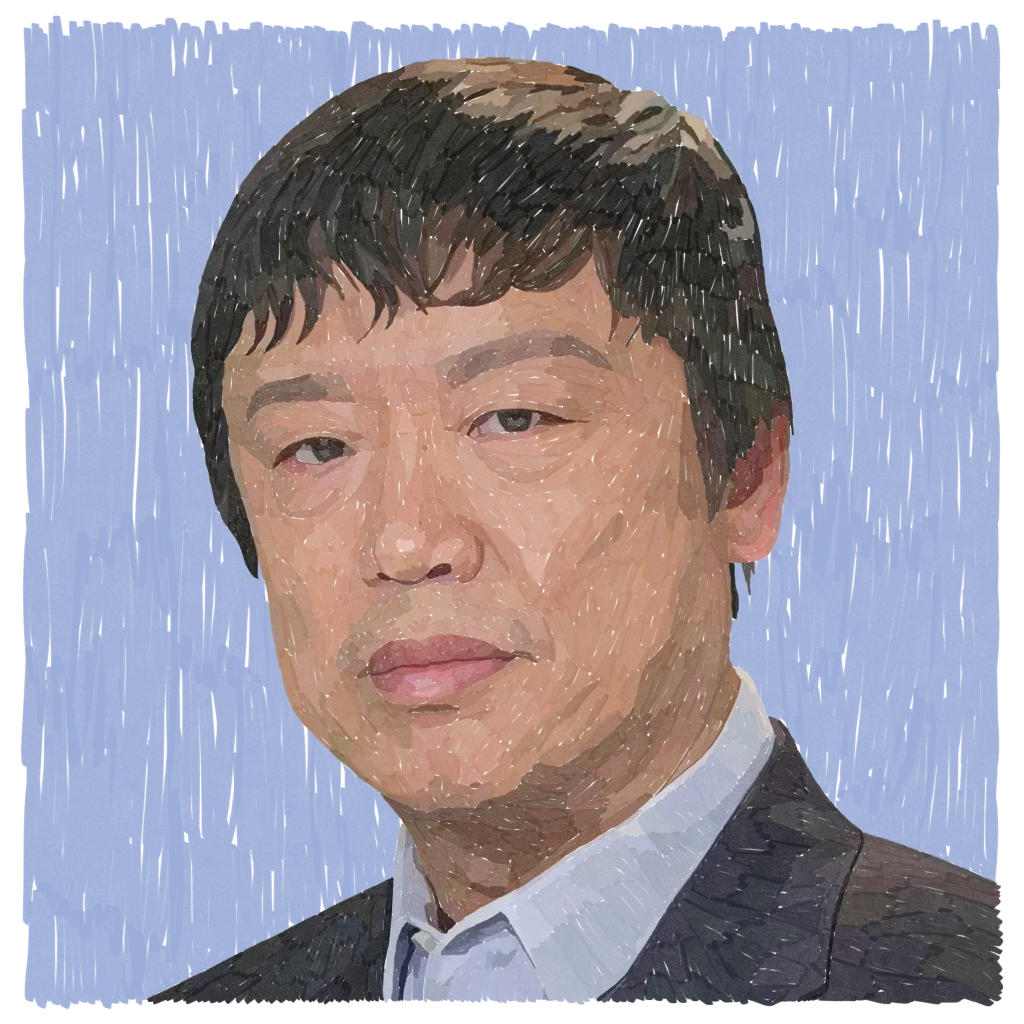Significance and Challenges: China-U.S. Cooperation on the Fentanyl Issue
Zhao Jian: Who’s Eating the Dividends of “De-Sinicization”?
- Analysis
- Bikai Chen
- 04/10/2023
- 0
The Chinese financial website Yicai published this article on August 11, 2023, written by Dr. Zhao Jian, President of the China Xijing Research Institute and an expert on China’s economy. The article incisively analyzes the impact of the trade war between China and the United States in recent years.
According to Zhao Jian, many developed and developing countries have reaped the benefits of China’s trade war with the United States. Moreover, he notes how the U.S. has not plunged into the long-term recession that was widely expected. Only China’s economy, by contrast, has encountered significant headwinds.
On August 16, Dr. Zhao Jian issued the following solemn statement on Xijing Research Institute’s WeChat public account: “In recent days, several domestic and overseas self-media have distorted and exaggerated one of my articles (which has been deleted), taken it out of context, created headlines and opinions to discredit China’s economy, and disseminated untrue views such as ‘China is the only loser’ and ‘China’s economy is declining rapidly’. I am outraged by this and hereby clarify and condemn it and reserve the legal right to further pursue this matter.”
Our macro research over the last year has been mostly correct about the pace of the recovery, the severity of the deflationary and downward cycle, and the cautious view on exchange rates and equity markets. There were also a few misses, one of which was the overestimation of the probability of a global recession, especially the probability of a financial crisis and recession in the United States.
Behind these overestimations, we underestimated the Fed’s ability to create and repair balance sheet cycles and the group immunity of developed market economies to risk. In addition, there is another major reason: not seeing that the global supply chain in the process of de-Sinicization has produced a huge spillover effect, so that more and more of China’s past competitors stand to benefit from China’s troubles. They are sitting on the funds, orders, capital, talent, industry chain, et cetera that have come from the de-Sinicization of the global supply chain. They themselves are making a lot of money, slowing down the cyclical downward pressure.
Singapore, for example, has been enjoying the dividends of the outward migration of Chinese financial capital and private wealth. Trillions of dollars of wealth were transferred from Hong Kong and the Mainland to Singapore, allowing it to take over Hong Kong’s status as an international financial hub without much effort. Other examples are Southeast Asia, India, Mexico and Canada. They have all taken advantage of the industrial supply chain and orders that have been relocated out of China. Mexico has reaped the greatest dividend because of its geographic advantage with America. It has become the largest trading partner of the United States in one stroke. The U.S. itself has made breathtaking progress in reindustrialization and the reshoring of manufacturing. Its manufacturing investment is surprisingly at an all-time high since 2022. Manufacturing investment is really roaring back. What Trump failed to achieve with the trade war, the Biden administration has easily accomplished with international politics.
Correspondingly, China’s export growth and foreign direct investment (FDI) have continued to decline since the second half of last year, and the pace of decline began to intensify after entering June and July. The latest export figures for July, in dollar terms, have fallen at a rate of -14.5%, the biggest decline ever recorded since the pandemic. FDI has fallen even more severely, setting a record low for this century. FDI’s decline has a greater directional significance, as FDI is often based on longer-term considerations and represents the world’s confidence in China’s future. So, while there is a cyclical element to these changes, I am afraid that they are more irreversible and long-term. This can also be seen in the continuing decline in China’s share of world trade.
This is a truly “changes unseen in a hundred years” in the international trade and political order. It is important to know that in the past two decades, China has for the most part firmly occupied the central position of the “world factory”, integrating hundreds of millions of laborers into the global aggregate supply curve, providing the world, especially the demand-creating developed countries in Europe and the United States, with good quality and cheap goods, and at the same time accomplishing its own miracle of Chinese economic growth. Both China’s national strength and the lives of the general public have improved dramatically during this period.
Why is import and export or international trade so important? Some people say that in terms of total volume, the GDP driven by exports is just a little bit, and it is passively subjected to fluctuations in the external environment. For example, in 2009, the subprime mortgage crisis in the United States triggered a collapse in global demand, and China’s economy immediately experienced major problems. It is true that the contribution of exports is not high in terms of total GDP, but it should be clear that those engaged in the export business chain are basically private enterprises and manufacturing industries, which have a very high employment intensity. According to the statistics of the Ministry of Commerce, the employment driven by foreign trade exports is nearly 200 million people, involving a very wide industrial supply chain. This is because the market system in the export sector is relatively well-developed. This is also an important reason why problems in external demand can easily produce a huge chill domestically.
Second, the exchange of exports for foreign exchange drives imports and also allows the people to buy good products and services (education, tourism and technology, et cetera) all over the world. Although structurally, unlike exports, imports are mainly from state-owned enterprises and from upstream industrial sectors, such as energy, minerals, food and core technologies and materials, overseas consumption and investment by the general public is increasing rapidly, making the Chinese people to feel the benefits of China being the world’s factories.
Most importantly, international trade has created a peaceful environment for China. The relationship between China and the “Western Powers” is no longer the “struggle” between colonization and anti-colonization of more than a century ago. Instead of savage wars and invasions filled with blood and fire, both sides have opened their doors and exchanged benefits based on the norms of the market. International trade has enabled the world’s most populous country to integrate into the world’s mainstream civilization and to rise in a peaceful manner, which must be said to be a blessing for the Chinese people as well as for the whole world. However, globalization is a double-edged sword, and while it creates welfare and prosperity, it is also exacerbating certain contradictions. As China enters a new era, its national strategy, governance structure, diplomatic style and comprehensive national power are undergoing tremendous changes. At the same time, American democratic politics is in rapid decline and alienation, with the emergence of Trump and the right-wing populist forces behind him. In this way, great power politics has inevitably undergone the tragedy predicted by John Mearsheimer. Since the beginning of 2018, China and the United States have become a typical example of this great power rivalry. They first engaged in a trade war, and then it has risen to a technological and financial war.
Faced with this situation, China has begun to adopt a new development strategy dominated by internal circulation. With regards to international economic and trade patterns, this is a historic major turn, which means that China is giving up a large number of opportunities. Whether it is industrial capital or financial capital, other countries are ushered in to reap the benefits of the great power game between China and the United States. It is necessary to realize that the size of China’s economy, including its industrial value added, its share of international trade, the FDI it attracts, and so on, basically accounts for 30% to 40% of that of the world. Today, even if China has only withdrawn a part of its share, this has brought huge resource spillovers to other competitors. For countries such as Southeast Asia, Mexico, India and even Japan, this is a huge ” de-Sinicization” dividend.
For China, it is also likely to have underestimated the significant impact of moving away from external circulation and the difficulty of making the internal circulation the dominant paradigm. This is a major paradigm shift, which means that the dualistic structure built up in the past will have to change dramatically in the short term, with much less capacity to mitigate macro risks. An important condition for the internal circulation to be revolved is not the supply side (solving chokepoint technologies) or the demand side (absorbing large amounts of overcapacity), but the distributional side. This includes both the distribution of income, where the share of the resident sector is still low and the level of transfers and benefits received is also low, and the balance sheet of the population, which is highly leveraged and unable to unleash sufficient demand to replace what is cut from external circulation in the short term. In the absence of a short-term solution to these fundamental problems, letting the dual circulation degenerate into a sole circulation will inevitably lead to severe demand shortages.
In the whirlpool of today’s globalization, not all are losers. The orders, capital, wealth, talents and industrial supply chain that China has “surrendered” because of its shift to an internal circulation strategy is a kind of “dividend” for many countries. Or rather, China has again contributed its share to the absence of a cyclical global great recession. Of course, China itself will need to face the pressure of greater long-term demand shortfalls.









